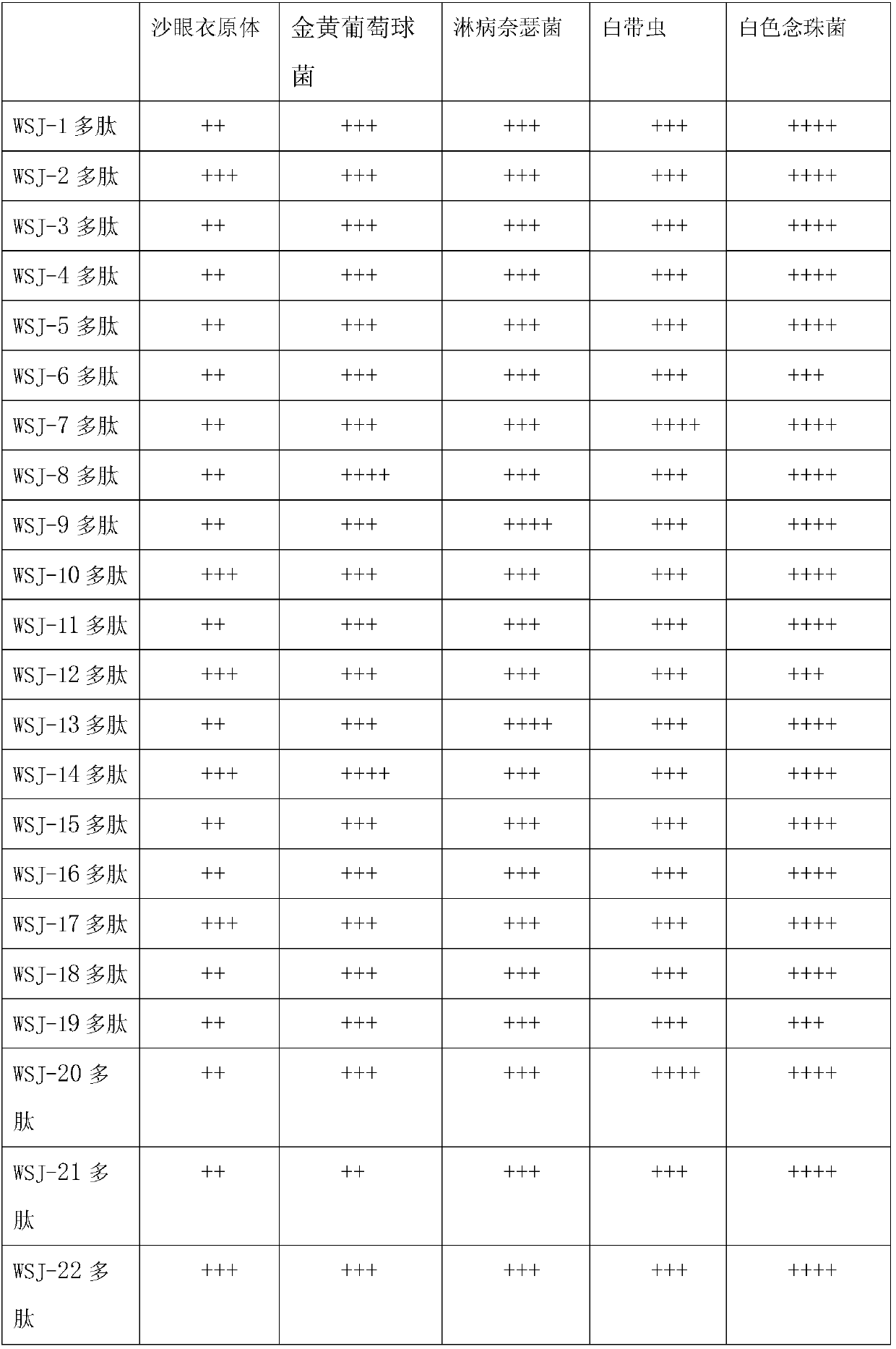An antibacterial sanitary napkin
A sanitary napkin, multi-functional technology, applied in sanitary napkins, peptides, bandages, etc., can solve the problems of being easily infected, failing to meet the requirements of sterilization, and not having safe and fast sterilization, so as to reduce dysmenorrhea, remove odor, and relieve emotions. Effect
- Summary
- Abstract
- Description
- Claims
- Application Information
AI Technical Summary
Problems solved by technology
Method used
Image
Examples
Embodiment 1
[0013] The screening of embodiment 1 antibacterial polypeptide obtains
[0014] Through the ginseng genome sequence obtained in the previous screening, small open reading frames with potential coding functions were found, and the corresponding amino acid sequences were translated from these small open reading frames, and antibacterial peptides were screened from them using three-dimensional structure analysis software, and the antibacterial peptides screened according to the prediction The peptide sequence was synthesized by solid-phase synthesis method, and the C-terminal was amidated, and the N-terminal did not contain methionine, and the antimicrobial peptide was prepared, and the corresponding functional verification was carried out. After screening, 22 antibacterial peptides were obtained, named WSJ- 1 to 22. Their sequences are respectively shown in SEQ ID NO: 1-22.
Embodiment 2
[0015] The effect verification of embodiment 2 antimicrobial peptides
[0016] The WSJ-1 polypeptide was dissolved in distilled water to a concentration of 2 mg / ml, and the antibacterial activity was detected by the agarose diffusion method. The strains used in the agarose diffusion method were Chlamydia trachomatis, Staphylococcus aureus, Neisseria gonorrhoeae, Leukorrhea, and Candida albicans. After the strains were revived, they were inoculated in the corresponding medium and cultured overnight, and then 50 microliters of the bacterial liquid were spread on the solid medium. After standing still and absorbing the bacteria-carrying liquid, add 10 microliters of polypeptide solution with a concentration of 2 mg / ml respectively. After culturing at 37°C for 16 hours, observe the presence and size of the inhibition zone. At the same time, observe whether the antibacterial zone changes within a week, and judge the length of antibacterial time. The results are shown in Table 1....
Embodiment 3
[0022] The preparation of embodiment 3 sanitary napkins
[0023] Immerse the multifunctional chip layer in an aqueous solution of polyethyleneimine, the concentration of polyethyleneimine in the aqueous solution is 5-10mg / ml, containing 0.14mol / LNaCl, reciprocating and oscillating for 40 minutes, and polymerization will be formed on the inner and outer surfaces of the new sheet. Object bottom layer; Place 100mL mass percent concentration then and be 0.01% 4, the methanol solution of 4'-diphenyldithiol was reacted for 5 hours, the chip layer after the reaction was vacuum-dried after fully soaking with methanol, and SeqIDNO: The antimicrobial peptide of 1 is reacted under the action of horseradish peroxidase and hydrogen peroxide respectively, and the chip layer of surface-bonded antibacterial peptide is obtained. The multi-functional chip layer is arranged under the non-woven fabric layer, the first dust-free paper is arranged under the multi-functional chip layer, and the poly...
PUM
| Property | Measurement | Unit |
|---|---|---|
| concentration | aaaaa | aaaaa |
| concentration | aaaaa | aaaaa |
Abstract
Description
Claims
Application Information
 Login to View More
Login to View More - R&D
- Intellectual Property
- Life Sciences
- Materials
- Tech Scout
- Unparalleled Data Quality
- Higher Quality Content
- 60% Fewer Hallucinations
Browse by: Latest US Patents, China's latest patents, Technical Efficacy Thesaurus, Application Domain, Technology Topic, Popular Technical Reports.
© 2025 PatSnap. All rights reserved.Legal|Privacy policy|Modern Slavery Act Transparency Statement|Sitemap|About US| Contact US: help@patsnap.com



